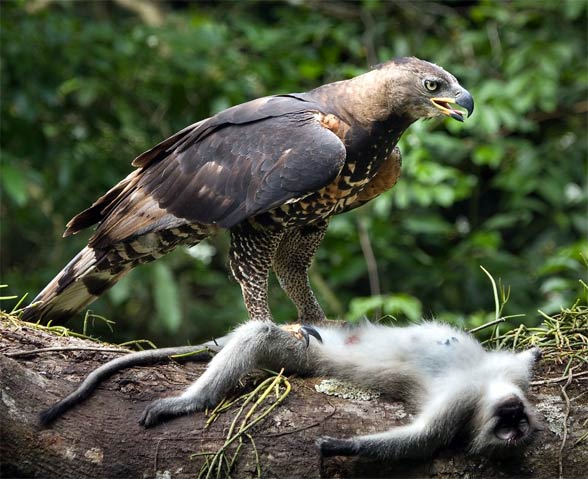The Philippine eagle is not built to glide like a sea eagle or stoop at blazing speeds like a falcon. She is built to obliterate. Standing three feet tall with a wingspan of nearly seven feet, she rules the tangled jungles of the Philippines with silence and precision. Her talons act as hooked blades, striking with surgical force. Prey does not run. It disappears. Monkeys, flying lemurs, lizards, and snakes all vanish in a blur when she descends.
Called the Monkey Eater, she is a hunter unlike any other. Patient, tactical, and relentless, she waits in the canopy until the perfect moment. Even her feathered crest is a weapon of intimidation, flared like a warrior’s helmet in combat. Her scream is not a song, but a battle horn, low and piercing, echoing through the forest like a warning of doom.
Yet this ghost queen of the jungle faces extinction. Fewer than 300 remain. She has not lost her war — her battlefield has. Deforestation and poaching have eroded her kingdom, leaving her a ruler without land. Still, she endures with extraordinary patience, mating for life and raising only one chick every two years. She passes on not only the skills of survival, but the legacy of rule.
The Philippine eagle is not just a hunter. She is a storm in bird form — the jungle’s executioner, the sniper with wings, and one of nature’s rarest, most powerful predators.
